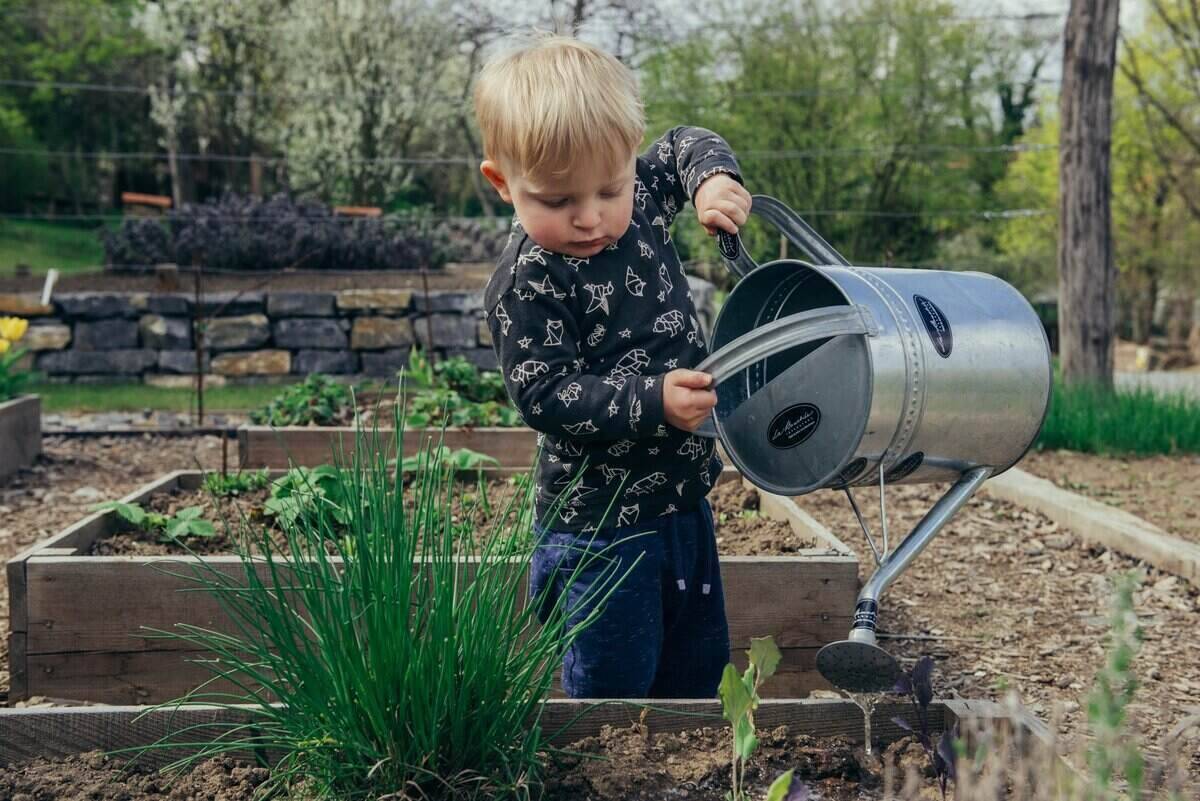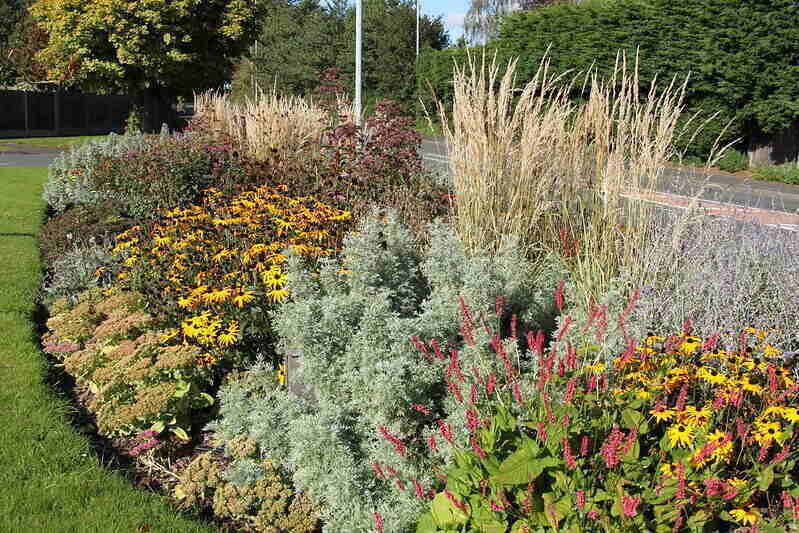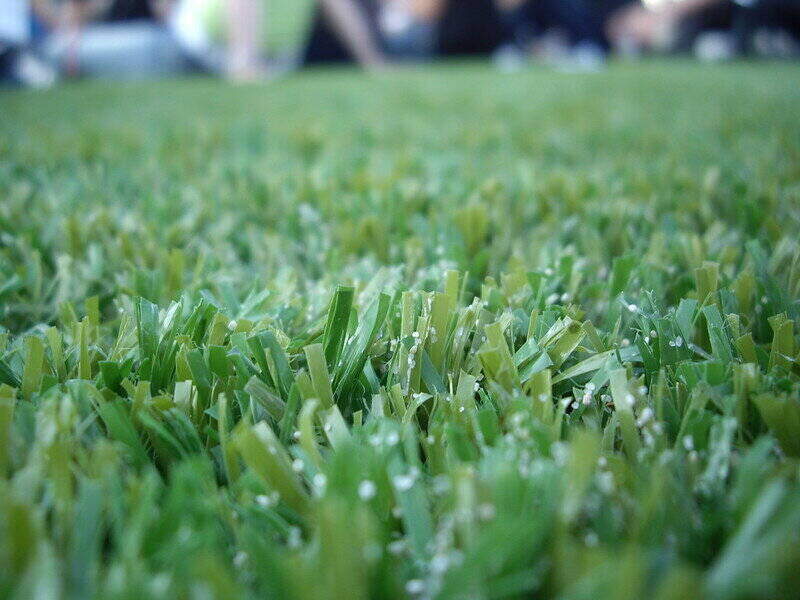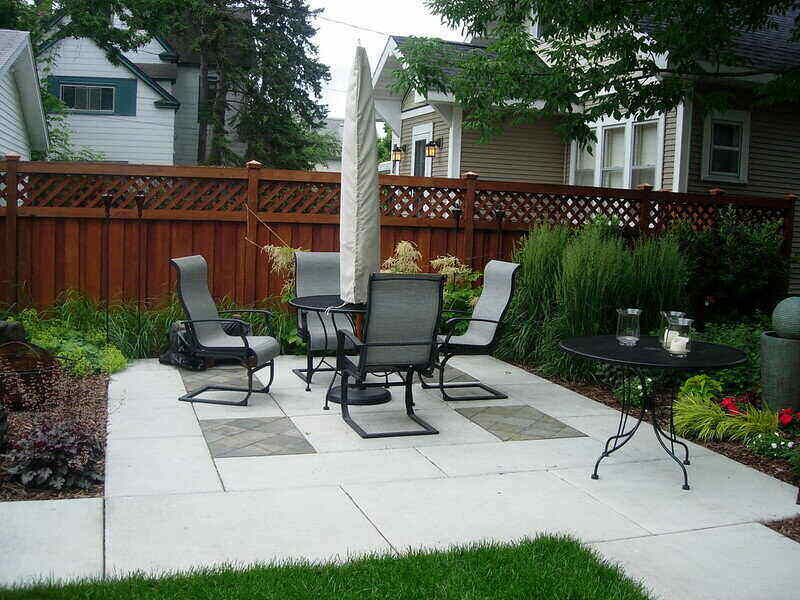
Residential properties and grass go together like bread and butter, but have you considered other options besides grass to bring beauty and function to your lawn? In this article, we’ll discuss seven grass alternatives for those trying to remove or reduce the grass in their yards.
If you’re looking to reduce the number of sauna sessions you have with your lawn mower this growing season, you’re not alone. As you search for resources on this topic, you’ll likely find information under several different headings:
- Drought-tolerant landscaping
- Grass alternatives
- Lawn alternatives
- Lawn replacement
- Lawn conversion
- Native lawns
- Natural lawn
- No-mow grass
- Water-wise landscaping
- Xeriscaping
Most of the headings above fall into seven different categories. Let’s explore each one to determine which approach is a good fit for your lawn, goals, and budget.
1. The ornamental bed approach
If you want to reduce your mowing time, increase the number of beds in your landscape. Installing flower beds or ornamental beds is a great way to decrease your lawn’s footprint without sacrificing curb appeal. (You might even increase your curb appeal!)
If you want to kill your grass to install a bed, you have a few options: Use a sod cutter, dig out the grass with a shovel, or do sheet mulching. Sheet mulching is an easy, eco-friendly method that kills the grass by removing light and air. You can do it in a few steps:
- Mow down the grass.
- Mark sprinkler heads.
- Water the grass (to help with decomposition).
- Dig up the grass within a foot of the driveway or walkways. (This prevents runoff and stops mulch from overflowing onto the hardscaping.)
- Install large plants (five gallons or larger).
- Lay cardboard or newspaper (several pages thick) as a weed barrier.
- Water the weed barrier.
- Add 2-5 inches of compost or mulch. (Some advise 6 inches or more.)
- Cut through the cardboard to install desired plantings.
Another approach that falls within this category is xeriscaping. Drought-resistant (or drought-tolerant) landscaping is a similar approach. These landscapes are frequently seen in the southwest United States and other arid locales. These lawns are sometimes completely devoid of grass and instead include cacti, succulents, and gravel or mulch ground cover. Other planting options include various species of agave, ornamental grasses, and other native plants.
Less extreme examples include replacing only part of your lawn with xeriscaping and leaving a small area of grass as a play area for the kids or the dog. In either case, it is a great method to reduce water use and mowing time.
2. The edible bed approach
This is a subset of the ornamental bed approach. The idea is the same. The only difference is that you use edible plants instead of ornamentals.
This approach works well if you’re interested in converting some or all of your lawn into beds but are looking for a more practical outcome. Some gardeners take this to the extreme and convert entire lawns into edible raised bed areas with gravel walkways in between, for example. Others intersperse edibles within their ornamental beds to create an eclectic feel as edible plants and flowers grow side by side.
If you are interested in this approach, there are countless vegetables, fruits, and herbs that function well in a standard or raised bed. Herbs love to live in beds and are a great stand-in for ornamental bushes. Fruit trees come in dwarf and standard varieties, making them a productive addition to a home landscape of any size. Chives and lettuces pair well with ornamental grasses. Lacinato kale is often used in ornamental beds because of its tall, textured look. (Even your HOA may approve.)
Finally, don’t forget about potted planters. Large pots can function as statement pieces for entryways and along walkways. Even some varieties of fruit trees work well in large pots.
These are just a few ideas on how to make the idea of an edible landscaping bed more palatable. Be creative, and seek local advice on what grows well in your area.
3. The meadow approach

If you’ve ever wanted to flutter barefoot across your very own field of daisies or wild chamomile, now’s your chance. While most homeowners won’t convert an entire lawn to a meadow, this approach reduces mowable space with defined areas of wildflower plantings. Wildflowers are great for increasing biodiversity and creating food for valuable pollinator populations.
Contact your local garden center or Extension agent for advice on where to buy a wildflower seed mix that is suitable for your area. Also, ask your local gardening expert about any local regulations or weed laws you need to be aware of.
4. The ground cover approach
Ground cover plants are a popular way to reduce or replace grass in your lawn. Homeowners use ground cover to replace grass in between walkway stones and to function as a low-maintenance grass alternative. Most ground covers tolerate low amounts of foot traffic, but a few will tolerate heavier wear. Choose a variety that works well in your area and with your sun or shade requirements. Here are a few examples of popular ground cover plants:
- Ajuga (Bugleweed)
- Asian Star Jasmine
- Creeping Jenny
- Creeping Juniper
- Creeping Thyme
- Dwarf Nandina
- Kurapia
- Liriope
- Microclover (or traditional clover)
- Mondo grasses or other native grasses
- Moss
- Sedge
- Sedum
- Small shrubs (great for ornamental beds) (Not a true “ground cover,” but a great way to “cover ground.”)
- Vinca Major and Vinca Minor
Note: Many of these plants include several different species from which to choose. Select the ones that work best for your climate and lawn.
5. The artificial grass approach
When you think of ripping out your lawn, you might automatically think of installing artificial grass. Artificial grass (also called artificial turf) results in a true no-mow, low-maintenance lawn.
Golf enthusiasts often install artificial turf to practice their golf game. Other homeowners choose this approach because they want to eliminate mowing, fertilizing, weeding, and upkeep and retain a beautiful lawn year-round.
There are several different manufacturers of artificial turf, each with different features and drawbacks. Be sure to do your homework to determine which brand meets your needs.
Pros:
✓ Allows for heavy foot traffic
✓ Fast installation
✓ No mowing
✓ No watering
✓ No chemicals
✓ Some brands are good for pets
✓ Hardy – can last for many years
Cons:
✗ Can be pricey
✗ Not allowed by all HOAs
✗ Not all brands are conducive for pets
6. The no-mow approach
Seed mixes marketed as “No-Mow” usually require some mowing. Think of these as grasses that require less mowing and maintenance than a standard Kentucky bluegrass, for example.
These seed mixes are commonly made with bentgrass or a mix of fine fescues. How often you mow will depend on the seed mix instructions. One fine fescue mix states that once the lawn is established, most customers mow once per year. These mixes are usually only recommended for cool-season or transitional zone lawns.
California Buffalograss claims to need only two mowings per year for a “meadow” look or every three to four weeks for a more trimmed look. This grass has been specially bred for dry California and Arizona climates. For other southern climates, no-mow mixes are harder to find. If you live in the South, consider the other approaches listed in this article for a low-maintenance lawn.
7. The hardscaping approach
If you want to reduce your mowable space, consider adding hardscaping to your property. Add these elements to increase outdoor living space and reduce or eliminate the grass:
- Athletic courts: tennis, basketball, volleyball
- Fire pits or fireplaces
- Outdoor kitchens
- Patios
- Pools
- Ponds or water features
- Walkways
Hardscaping is usually a significant financial investment. If you were planning to invest anyway, consider the lower grass maintenance costs as an additional long-term benefit.
Other considerations
When you are deciding which approach will best reduce or eliminate the grass in your lawn, consider these things:
- What are your sunlight/shade requirements?
- Do you have erosion control concerns or slopes?
- Do you have pets?
- What kind of maintenance will your lawn alternative require?
- How much do you want to spend?
Pros and cons
If you are considering an alternative to traditional turf grasses, there are a host of reasons to make the switch. To be fair, you’ll want to consider the potential cons as well.
Pros:
✓ Less water usage
✓ Fewer (or zero) pesticides or herbicides
✓ Less money spent on water and chemicals
✓ Fewer concerns about weeding or a “perfect lawn”
✓ Increased biodiversity (especially in pollinator gardens)
✓ More visual interest and added color (especially with flowering plants)
✓ Increased habitat for wildlife and pollinators
✓ No more (or reduced) mowing
✓ Less fertilization
✓ Less time (or money) on maintenance
✓ Some cities offer rebates for low-water lawns
✓ There are lawn alternatives suited to full sun, part-shade, and shady areas
✓ There are lawn alternatives suited for any climate
✓ Adds dimension to your yard
✓ Increases curb appeal
Cons:
✗ Some grass alternatives may not be allowed by your HOA
✗ Won’t have that “traditional lawn” look
Try one, or combine approaches
These six different categories are there to guide you into an approach that works well for your lawn. Most homeowners will combine several of these options to come up with solutions that suit them. For example, you may want to keep some grass but incorporate more ornamental beds into your front yard. Your backyard may be suitable as a partial wildflower or pollinator area. Whatever your lawn care goals, these approaches can help you meet them.
Create a low-maintenance landscape
If you’ve grown weary of mowing, edging, blowing, and fertilizing your lawn, these grass alternatives may be viable options for saving you time, money, and hassle. Grass is not the only way to landscape your property. These six alternatives allow for less upkeep without sacrificing beauty or functionality.
If you’d prefer to leave this job in the hands of an expert, don’t hesitate to contact a professional today to help you explore your landscape design options for a grass-free lawn.
Main Photo Credit: Filip Urban | Unsplash


